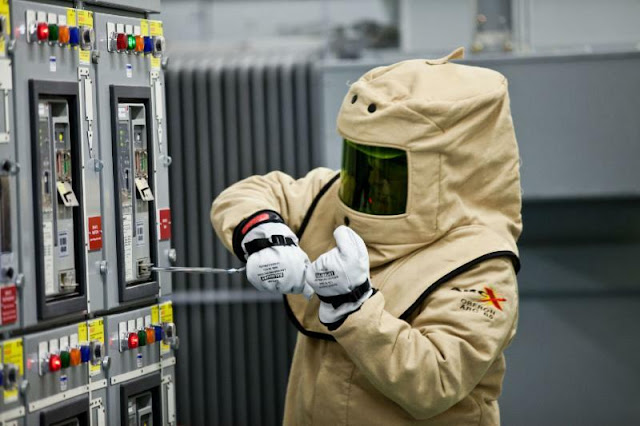Importance of Industrial Arc Protection for Workers
Industrial electric arc protection means detecting electrical arcs in equipment like MV and LV and immediately isolating power to limit arc energy and help eliminate possible risky threats.
Let's
understand more about Industrial
electric arc protection and how important that means for the safety
of workers.
An arc flash is a kind of occurrence where a high-volt electric short circuit made through the air in-between exposed conductors or a flashover leaves its path to another or moves to the ground. At that moment, it could be very dangerous for the surroundings, especially when any person is in the range of the arc flash. This can cause sudden death even. This is a kind of phenomenon. There are many factors that can cause Arc to flash, like, fault during installation, surrounded dust, condensation, faulty material equipped, accidental touches, flying objects or falling off materials, etc.
Protection
Boundaries of Industrial
electric arc protection
The National Fire Protection Association (NFPA) has guided some important approach boundaries that are crafted to protect everyone while working using or around powered equipment. NFPA-designed boundaries are Flash Protection Boundary which is an outer boundary, Limited Approach boundary, Restricted Approach boundary, Prohibited Approach which is the inner boundary.
Flash
Protection Boundary, which is the outer boundary,: The flash boundary is the
last and farthest boundary from the energy source. When a worker or an employee
gets fewer burns, that can be a second-degree level of burn (1.2 calories/cm2),
which can be cured.
Limited
Approach: This is a limited distance from an exposed live part where there is a
shock danger.
Restricted
Approach: this is at no distance from an exposed live part where their actual
danger is very close.
Prohibited
Approach, which is the inner boundary: It is at zero distance from the live
exposure part. In Industrial electric
arc protection this distance is not common between equipment.
Some equipment has a best flash protection boundary while other equipment may have a lesser boundary.
Industrial electric arc protection of the Employees
The arc period is short; however, the results can be devastating. The electric
arc is an effective explosion, sending out a shockwave, liquefied metal, and
high-intensity convected heat. This mix of elements can trigger an employee's
apparel to spark, melt promptly, or because clothing to break open, resulting
in extreme skin burns.
Electric Arc-Flash Hazards provide feasible injury or damage to health
connected with the release of energy triggered by an electric arc. The main
threats of personal injuries arise from the pressure effect forces on the body
because of the fast heating-up of the angle bordering gas. When it comes to the
arc flash, it always includes repercussions, and a lot of things occur from the
surge.
Risk Assessment-- NFPA 70E, Standard for Electric Security in the Workplace, is
a requirement for risk-free job methods to safeguard personnel by minimizing
direct exposure to major electrical threats. NFPA 70E assists firms and workers
to prevent office injuries and deaths from shock, electrocution, arc flash, and
arc blast. The core objective is functional, accomplishable electrical safety
and security that leads to the employee going home safe at the end of the day.
Arc Thermal Efficiency worth (ATPV) is the case power on a textile that causes
inadequate heat transfer with the material to cause the onset of a second-degree
melt. ATPV indicates the degree of defense offered by flame immune garments as
determined in cal/cm ². The material will typically not burst unless subjected
to energy degrees more significant than the arc ranking.
Therefore, in
Industrial electric arc protection
workers operating in areas with potential electrical dangers need to be given,
as well as should use electrical protective tools that are suitable for the
particular parts of the human body to be protected and for the job to be
executed.

.jpg)

Comments
Post a Comment